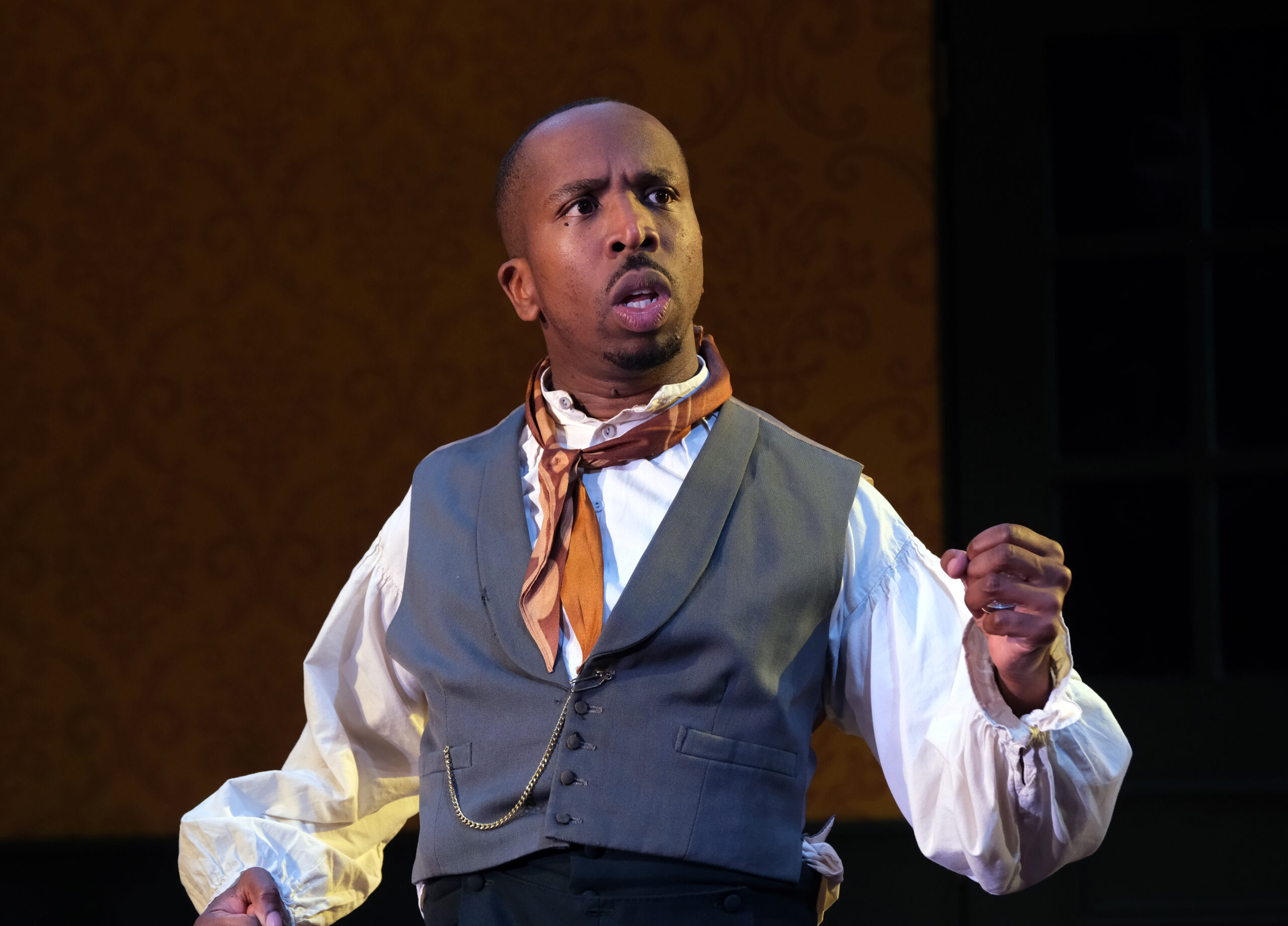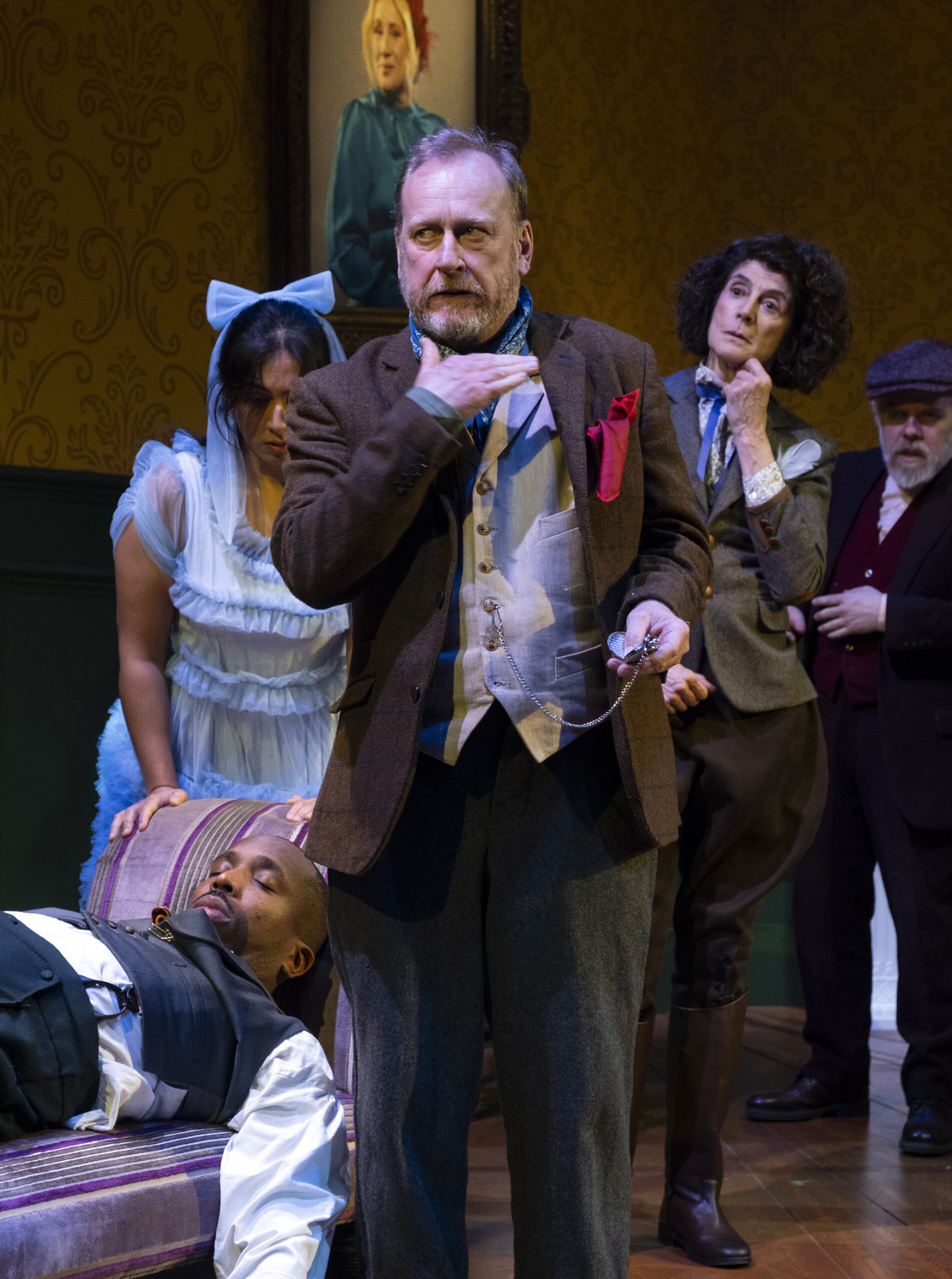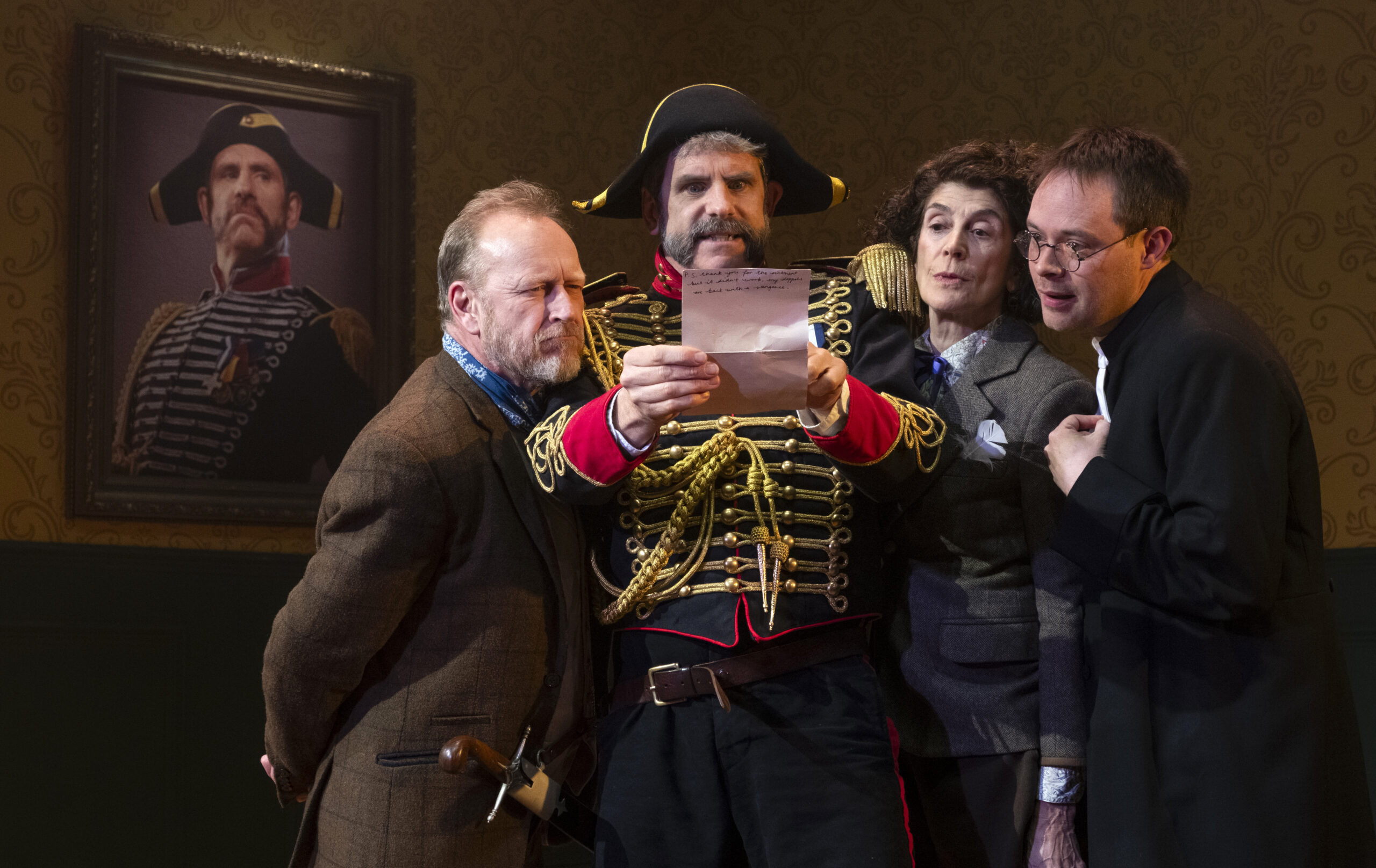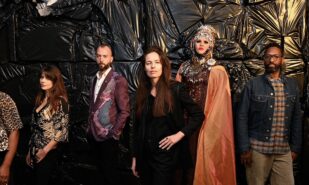From the very start, this new production of “The Government Inspector” leaves no illusions for the audience. “Did you come for a comedy?”, its creators almost cruelly ask, before answering: “Well, then you’re in for a good laugh!” Patrick Myles’ production is quite unusual to someone well-acquainted with the text of the play. However, the genre chosen by the director leaves spaces for almost everything – and it is unexpected.
Indulgence of Buffoonery: An Unexpected Version of Gogol at the Marylebone Theatre

The first thing the audience sees is a bed. Someone moustachioed dozes in it. The face looks imposing and intimidating in the blue light. Suddenly, from the smoke billowing from behind the headboard, a monster appears. Initially one might mistake these black ears for devilish horns, but no – it’s just a huge rat.
It’s about to devour the mayor – as he was the one sleeping in the middle of the stage. He jumps up, gasping and screaming, as if he’s been propelled by a spring. He has just had a nightmare involving this very rat. Of course, we recognize the dream of rats mentioned by the mayor later in the play. And this is only the beginning.
Overall, this performance is vibrant, expressive, the characters throughout the entire action move around on a brightly-coloured, almost blinding set. The reason is in the nature of this genre. It’s a real farce lasting a full two hours with an intermission. It includes falls, somersaults, exclamations, and squeals.

The action is transported from pre-revolutionary Russia to – perhaps – early 20th-century England. Khlestakov (Kiell Smith-Bynoe), renamed Percy Fopdoodle in this version, imitates Churchill. He also claims to be on friendly terms with “Charlie Dickens” and to have written “Pride and Prejudice”, and here the timeline gets confusing. However, one shouldn’t forget that everything here is subject to the omnipresent law of buffoonery.
In this version of “The Government Inspector” the psychology of its characters is reduced to gags. We see masks and moving pantomime artists. How could it be otherwise in a comedy-farce? It is almost a clown show or a street theater, and it succeeds in making us all nauseous (literally, by the way!).

The Swashpratt family that consists of the mayor, the mayoress (Dan Skinner and Martha Howe-Douglas) and their daughter are a caricature of people thirsty for power. The mother bullies her daughter (Chaya Gupta), who will stop obeying maternal orders and pokes in the end.
Cleverly crafted sets create a sense of vast space for the audience. The wallpaper pattern rapidly converges into a corner and decreases into creating a false perspective resembling the parquet lines. It’s summer, the birds chirp, the tree branches tap against the large window. It seems like a sleepy provincial town. But what a provincial town!
The whole gang of its officials led by the mayor is torn apart by vices. There is nothing humane about them, as these figures cannot ever resemble a human being. In the original Gogol’s play the mayor says, “Pig snouts instead of faces!”, and that is indeed an ideal illustration of their appearance. They drink, lie, fight and assault each other, starting this routine all over again. There is a frenzied dance at the end of the first act, when the drunken officials join in the contorting circle and follow Fopdoodle. We can see hands, feet, dresses, shoes – everything and everyone gets mixed up in one crazy mishmash. When the same rat from the mayor’s nightmare jumps onto the stage, no one is actually surprised.

The mother and the daughter resemble monsters just like everyone else. Their costumes look like perfect clown suits, and Miss Swashpratt’s dress, trimmed with blue lace pillows, doesn’t seem to hurt at all when she falls.
The characters in this production exist at a boiling point for two hours. They jump, push, fall, and roll like balls. They flip-flop and cascade in the frenzied unstoppable pace of the dangerously unwinding carousel. The hoarse waltz of the barrel organ has turned into a lively tremolo of the balalaika here. One attraction follows another, waves of laughter roll through the hall. Sideshows lead to gags that could be rough and resemble the ones of the street theatre. However, they never go beyond the director’s limits of buffoonery set by the chosen genre. “Katyusha” is also played here (what time are we in, really?), as this production welcomes eclecticism, farce, and absolute madness.
The travelling show could be a model of this world, with servant Fudgel (Daniel Millar) being its stage manager. He’s the only one who doesn’t scream and jump: initially wearing a mask of the Red Clown or a Harlequin, he then becomes a lively character with a couple of gestures and glances.
He’s the only one who knows what he wants: he takes all the master’s money, he is not lacking female attention either. It is a character with psychology, and he is not reduced to a buffoon mask. Here he is either a kindergarten teacher or the leader of a group of rowdy clowns. He guides his tipsy master, then feeds him with a spoon, then massages him, and then just takes him away.

There’s not a single chance to stop, rest, or think when you are watching this production. It becomes evident in the final scenes when the gendarme (in fact it is Fudgel changing his guise) announces the arrival of the real inspector. These characters are not even allowed a silent scene: a wild, clownish cry bursts from their distorted mouths, making the sudden shock even more terrifying. Like a famous troika of horses from another of Gogol’s texts, the production is on a mad run, with flakes of foam dropping behind it. But this troika is tied to the carousel wire, and the horses are forced to race in circles to the tune of balalaika playing the Korobeiniki tune.
The performance will run through June 15th.





